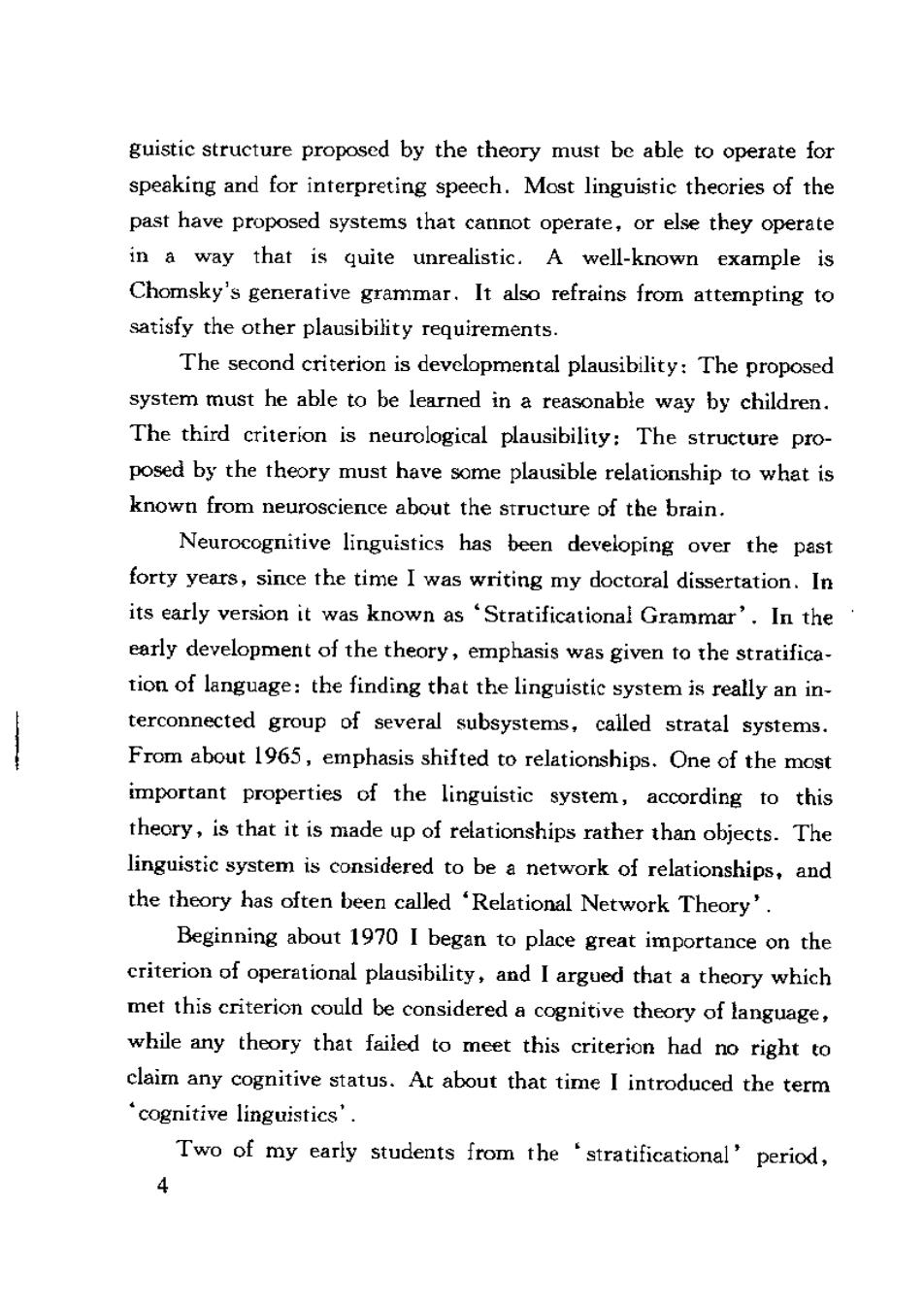正在加载图片...

guistic structure proposed by the theory must be able to operate for speaking and for interpreting speech.Most linguistic theories of the past have proposed systems that cannot operate,or else they operate in a way that is quite unrealistic.A well-known example is Chomsky's generative grammar.It also refrains from attempting to satisfy the other plausibility requirements. The second criterion is developmental plausibility:The proposed system must he able to be learned in a reasonable way by children. The third criterion is neurological plausibility:The structure pro- posed by the theory must have some plausible relationship to what is known from neuroscience about the structure of the brain. Neurocognitive linguistics has been developing over the past forty years,since the time I was writing my doctoral dissertation.In its early version it was known as 'Stratificational Grammar'.In the early development of the theory,emphasis was given to the stratifica- tion of language:the finding that the linguistic system is really an in- terconnected group of several subsystems,called stratal systems. From about 1965,emphasis shifted to relationships.One of the most important properties of the linguistic system,according to this theory,is that it is made up of relationships rather than objects.The linguistic system is considered to be a network of relationships,and the theory has often been called 'Relational Network Theory'. Beginning about 1970 I began to place great importance on the criterion of operational plausibility,and I argued that a theory which met this criterion could be considered a cognitive theory of language, while any theory that failed to meet this criterion had no right to claim any cognitive status.At about that time I introduced the term cognitive linguistics'. Two of my early students from the 'stratificational'period, 4